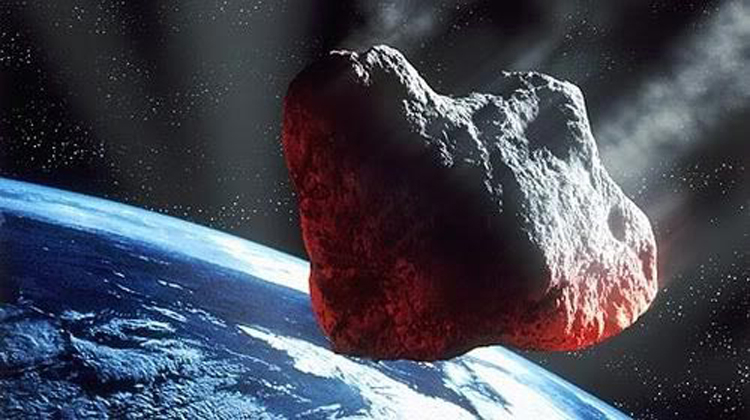
Last year, a NASA mission proved that humans could change an asteroid’s course by crashing into one with a spacecraft. But if an impact alone is not enough, we do have at least one alternative option: nuking it.
A new study, released after NASA's Double Asteroid Redirection Test (DART) mission successfully moved an asteroid moonlet, studies how a nuclear device could redirect an errant space rock coming to Earth. (We haven't found any problems yet despite decades of searching, but searching and research continues as a precaution.)
“If we have enough warning time, we could potentially launch a nuclear device, sending it millions of miles away to an asteroid that is headed toward Earth,” Mary Burkey, a physicist at Lawrence Livermore National Laboratory, said in a Tuesday (Dec. 19) statement.
Related: 'HAMMER' Time? Spacecraft Could Nuke Dangerous Asteroid to Defend Earth
Planetary defense researchers are actively investigating the very cinematic possibility of fending off an impending asteroid with a nuclear detonation, just like Bruce Willis did in the 1998 Hollywood movie "Armageddon." As part of that research, Burkey and colleagues developed a new model that simulates what a nuclear detonation’s high-energy, X-ray emissions will do to an asteroid.
On paper, nuking an asteroid has advantages over a mission like DART. The biggest is energy: Nuclear devices are capable of producing more energy per mass than any human technology. And because space launches must always minimize mass, a nuclear warhead can deliver a far more powerful punch than a DART-like spacecraft can ever manage.
“We would then detonate the device and either deflect the asteroid, keeping it intact but providing a controlled push away from Earth, or we could disrupt the asteroid, breaking it up into small, fast-moving fragments that would also miss the planet,” said Burkey.
Get the Space.com Newsletter
Breaking space news, the latest updates on rocket launches, skywatching events and more!
A nuclear detonation delivers much of its energy in the form of X-rays. If a nuclear explosion strikes an asteroid, this powerful radiation can wash over the asteroid, potentially vaporizing any material unlucky enough to be in its path. Burkey and colleagues developed their model to simulate these effects on four different asteroid materials and under a range of conditions.
It is critical to ensure that any sort of asteroid deflection attempt actually deflects the asteroid on a non-hazardous course — and does not cause collateral damage by sending asteroid shards toward humans. For that reason, the researchers say they hope that planetary defense scientists can use this model to get a clearer picture before they try anything.
The research was published on Dec. 19 in The Planetary Science Journal.
Join our Space Forums to keep talking space on the latest missions, night sky and more! And if you have a news tip, correction or comment, let us know at: community@space.com.

Rahul Rao is a graduate of New York University's SHERP and a freelance science writer, regularly covering physics, space, and infrastructure. His work has appeared in Gizmodo, Popular Science, Inverse, IEEE Spectrum, and Continuum. He enjoys riding trains for fun, and he has seen every surviving episode of Doctor Who. He holds a masters degree in science writing from New York University's Science, Health and Environmental Reporting Program (SHERP) and earned a bachelors degree from Vanderbilt University, where he studied English and physics.
-
Pogo But, this would have to be used sufficiently early, depending on the lateral velocity, otherwise we’ll be sending some large chunks to various Earth localities rather than one big chunk in one place. The chunks need to move laterally enough to miss the Earth entirely.Reply -
Homer10 The problem, you have to pay careful attention to is the exact placement of the Nuke. It should be positioned in front of the direction of motion of the asteroid around the Sun. Also it needs to be placed slightly above the center line of the asteroid in relation to Earth. A large mass of water might be helpful. Maybe a donut shape. The Nuke will cause the water to instantly vaporize, and act to enhance the push, and slightly dampen the shock. Because the Nuke detonates in front of the asteroid it will act to slow the entire mass down a little bit. This causes the asteroid, and all the shards to fall inward towards the Sun, and will now be much below Earth's orbit. It might even fall into the Sun, gone forever. But, make no mistake, this will be tricky to pull off correctly.Reply









